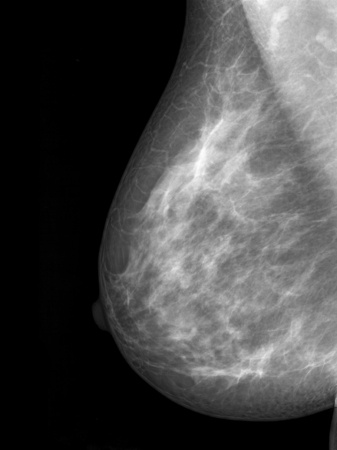 Breast density is determined by the amount of fibrous and glandular tissue in the breast. Dense breasts are made-up of more lobules (glandular tissue) and connective tissue and less fatty tissue.
Breast density is determined by the amount of fibrous and glandular tissue in the breast. Dense breasts are made-up of more lobules (glandular tissue) and connective tissue and less fatty tissue.Each type of tissue in the breast plays a specific role. The function of lobules, or glandular tissue, is to carry milk to the nipple. Fatty and connective tissue shape the breast and provide support.
Why is Breast Density Important?
Just as breast size and shape varies, so does breast density. Some women’s breasts are mostly fatty tissue; others contain primarily fibrous and glandular tissue, while the remainder is a mixture of both types.
Dense breasts are more common in younger women, since density tends to decrease with age. Family history and hormones are also thought to play a role in breast density.
Breast density is important because it is linked to a higher risk of breast cancer. Some studies have shown that women with dense breasts have a four to six times greater risk of developing breast cancer.
Diagnosing Dense Breasts
Breast density can’t be determined by a self-breast exam or by a manual exam performed by your OBGYN. The best way to diagnose dense breasts is through digital mammography.
There are four categories of breast density:
- Mostly fatty – the breasts are almost completely made-up of fatty tissue
- Scattered fibroglandular tissue – some areas of density but primarily fatty
- Heterogeneously dense – Mostly dense tissue with some areas of fatty tissue
- Extremely dense – nearly all dense tissue
Breast density will be noted on mammogram reports. It’s important to know your breast density since it can affect your breast cancer screening routine.
What to Do if You Are Diagnosed with Dense Breasts
If your mammogram reveals you have dense breast tissue, talk with your gynecologist about whether or not additional screening tests are necessary. It is more difficult to detect breast cancer on mammography in denser breasts, since both breast tumors and dense tissue appear white.
For this reason, your doctor may recommend additional tests, such as ultrasound or MRI, be performed.
Women with a strong family history of breast cancer, known BRACA1 or BRACA2 genetic mutation or other risk factors, may even be advised to add MRI or ultrasound to their annual mammogram screening regimen.
